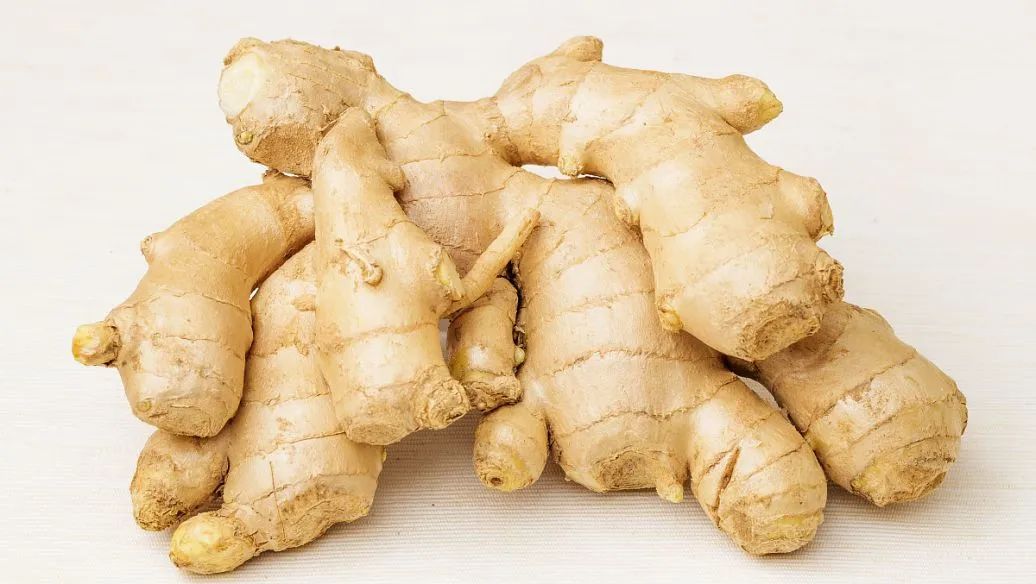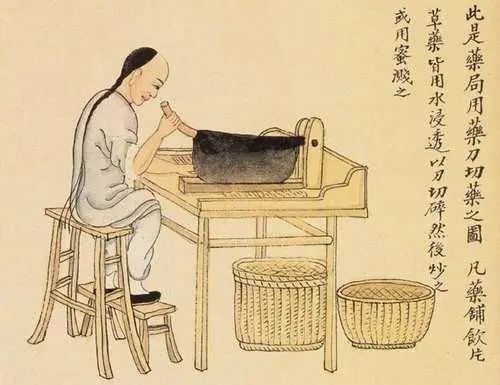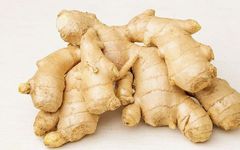Dried Ginger (Gan Jiang) is the dried rhizome of the ginger plant (Zingiber officinale), which, according to TCM theory, has the effects of warming the middle, dispelling cold, reviving yang, unblocking the meridians, warming the lungs, and transforming phlegm. Traditional texts on herbal medicine document various processing methods for dried ginger, including slicing, fire roasting, purification, carbonization, juice processing, salting, steaming, and more. Today, we will explore the traditional processing techniques of dried ginger.
The processing methods for dried ginger are numerous, including both the fire roasting method without additives and those that incorporate various additives. For instance, the “Revised Zhenghe Classics” records, “Fry until black and grind into powder,” while the “Annotated Women’s Good Recipes” states, “Dried ginger roasted until black is called black ginger.” Among the methods that use additives, ingredients such as licorice juice, ba dou (Croton tiglium), ginger residue, dihuang (Rehmannia glutinosa) juice, yellow clay, stove earth, sand, children’s urine, and wine are utilized.

According to the “Pharmacopoeia of the People’s Republic of China,” the processed products of dried ginger include dried ginger, ginger carbon, and roasted ginger. The processing specifications for dried ginger state: “Remove impurities, soak briefly, wash clean, moisten thoroughly, cut into thick slices or chunks, and dry. The product should be irregularly shaped, with a thickness of 0.2 to 0.4 cm.” The specifications for ginger carbon state: “Take dried ginger chunks, place them in a hot pan, and stir-fry over high heat until the surface is charred black and the interior is dark brown, or until a specified degree is reached. Spray a little clean water to extinguish the flames, remove, and let cool. For carbonization, place the roasted product in a calcining pot, seal it, and heat to the desired degree, then cool and remove. During carbonization, it is important to ‘preserve the properties’ and prevent ash formation, as well as avoid re-ignition.” The specifications for roasted ginger state: “Take dried ginger, sand fry it with clean river sand in a frying container, heat over high heat until it becomes smooth, add the product to be roasted, and continuously stir until the sand swells and the surface turns brown, then remove, sieve out the river sand, and let cool.”

Researchers have found through experimental studies that using sand as a heat transfer medium, due to the large surface area and high density of sand particles, can effectively buffer the rapid temperature rise caused by excessive heat. This allows the product to be buried among the large sand particles, ensuring even heating. Compared to direct frying, sand frying uses high or medium heat, which shortens the frying time; it also prevents direct contact between the product and the bottom of the pan, and with proper operation, there is almost no gelatinization or charring, overcoming the ‘outer charring and inner raw’ phenomenon seen in direct frying. The final product is uniform in quality, and both the yield and explosion rate are superior to direct frying, hence the recommendation that ‘if one can sand fry, there is no need for direct frying.’
Text by: Zhang Yifei
Editor: Yang Ke
References:
[1] Zhou Yiqun, Li Rui, Wu Ping, He Fuyuan, Shi Jilian. Research on the Processing Methods of Dried Ginger Throughout History. Journal of Traditional Chinese Medicine, 2020, 35(06): 2762-2767.
[2] Yu Damei. Discussion on the Processing of Dried Ginger. Journal of Zhejiang Chinese Medical University, 2021, 45(01): 60-63.


